For textile artist Jessica Grady, there’s no such thing as ‘too much’ when it comes to embellishing her work. Even her embellishments are embellished, creating a feast for the eye in terms of colour and texture.
The magic is found in her use of ‘sequins,’ which Jessica stresses aren’t limited to shiny little plastic circles. They can be created from anything and in any shape, including sweets wrappers, straws, wire, metal washers, junk mail, cereal boxes and, of course, fabric.
While Jessica’s whimsical bits and bobs are a joy to behold, they also have a serious purpose in raising awareness about zero waste and recycling. Jessica seeks to literally turn rubbish into works of art, and she delights in viewers’ astonishment upon closer viewing of her work. ‘Look! That’s a bottle cap!’
Jessica’s vibrant selection of unloved objects, combined with traditional embroidery work, is something we’re sure you haven’t seen before. And she is kindly offering us a look into both her process and artistic philosophy.
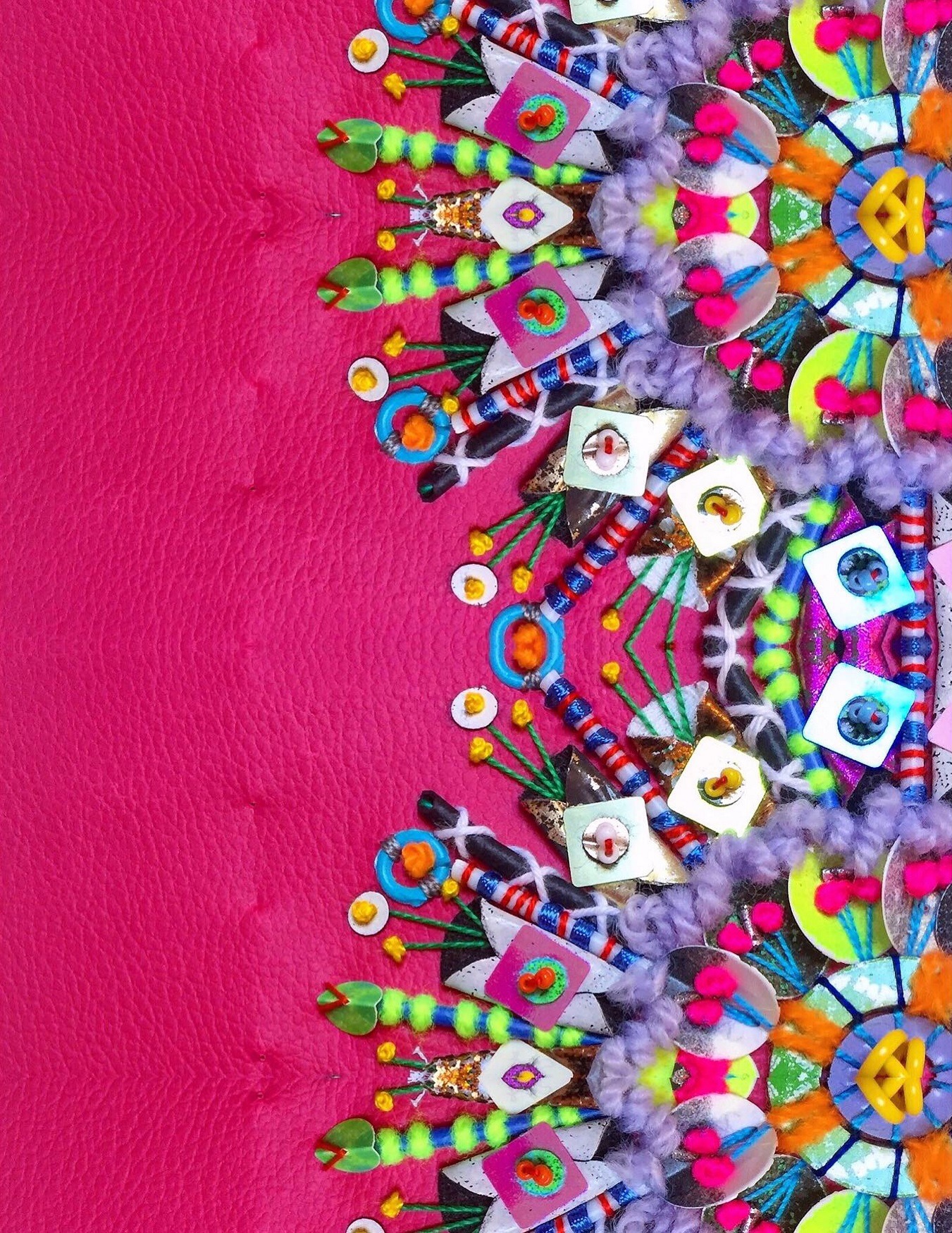
Tell us a bit about your art practice…
Jessica Grady: My work is entirely stitched by hand using embroidery techniques and intricate detailing. Each stitch provides an added element of texture and colour to the work as a whole.
With a lot of sculptural embroidery pieces, I often stitch into and embellish my embellishments before adding them to the fabric, to increase the level of small details.
I also like to work in layers to help build up my pattern. I begin with the largest shapes first, and then the detail gets smaller as I layer up, leaving my embroidery stitches as my final flourish.
I am a fan of basic stitches, such as straight stitch, couching, french knots and chain stitch. I think the most simple stitches have the most versatility in the way they can be manipulated and used within a piece of work.
When I stitch embellishments onto fabric, I try to use my securing stitch as an added pattern or design. It’s like doodling with a pen on paper, but I use my needle and thread.
I also cut and create the vast majority of my sequins and beads through many mixed media processes, including dyeing, painting, fusing and foiling.
Colour is another important aspect of my work. I use many strong and highly contrasting colours, creating a very vivid and saturated colour palette. My artworks are a textural and visual feast, saturating the senses with colour and pattern.
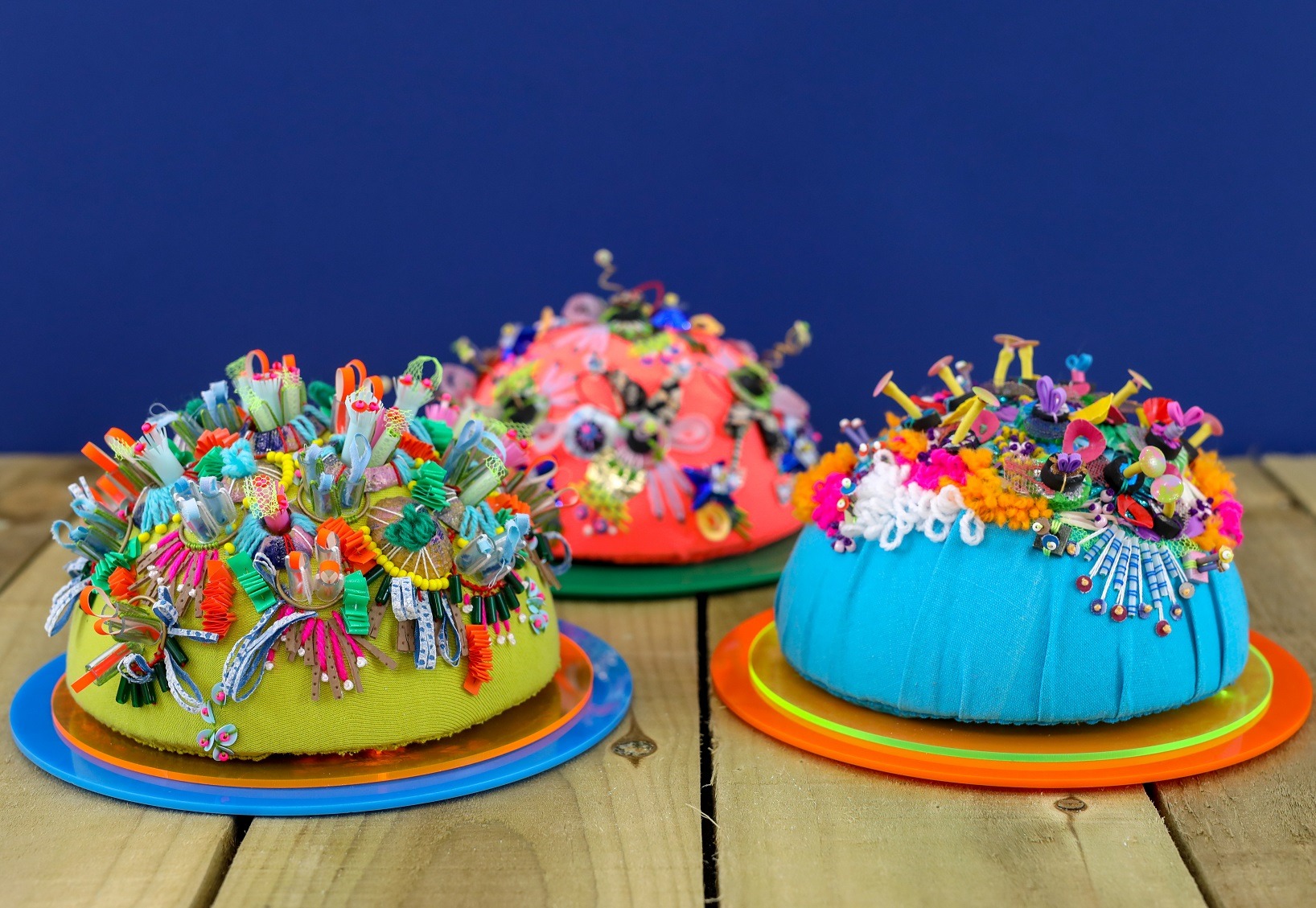
From trash to treasure
Tell us about your design process…
I am a firm ‘anti-planner’ and avoid planning out designs in advance. I instead create mini samplers that demonstrate a technique or motif idea that I have swirling around in my head. I can then see if the idea works and then develop it further.
I prepare my materials in batches, so one day I might be dyeing recycled plastics and on another I am painting metal washers. I want to have colourful and exciting things ready, that make me want to create something with them.
I work with recycled and unconventional materials, so actually creating my sequins, beads and embellishments is my favourite part of the process.
Every work is inspired by my materials – the colour, shape or texture of something is always the catalyst to what will be created.
Jessica Grady, Textile artist
For me, it’s all about transforming waste materials. For example, I’ll take something mundane like a ground coffee packet and then dye, paint, scrunch and overstitch the fabric to create something totally unique. And nobody would be able to guess it’s made from something many people would throw in the bin!
I’m passionate about utilising mixed media and recycled materials such as painted metal washers, hand-dyed plastic waste, dyed sponges and stripped electric cables. The juxtaposition of unusual media with traditional techniques invites the viewer in for a closer look.
My continued experimentation also means I don’t think I will ever run out of new ideas for unusual materials I can stitch onto my fabrics!

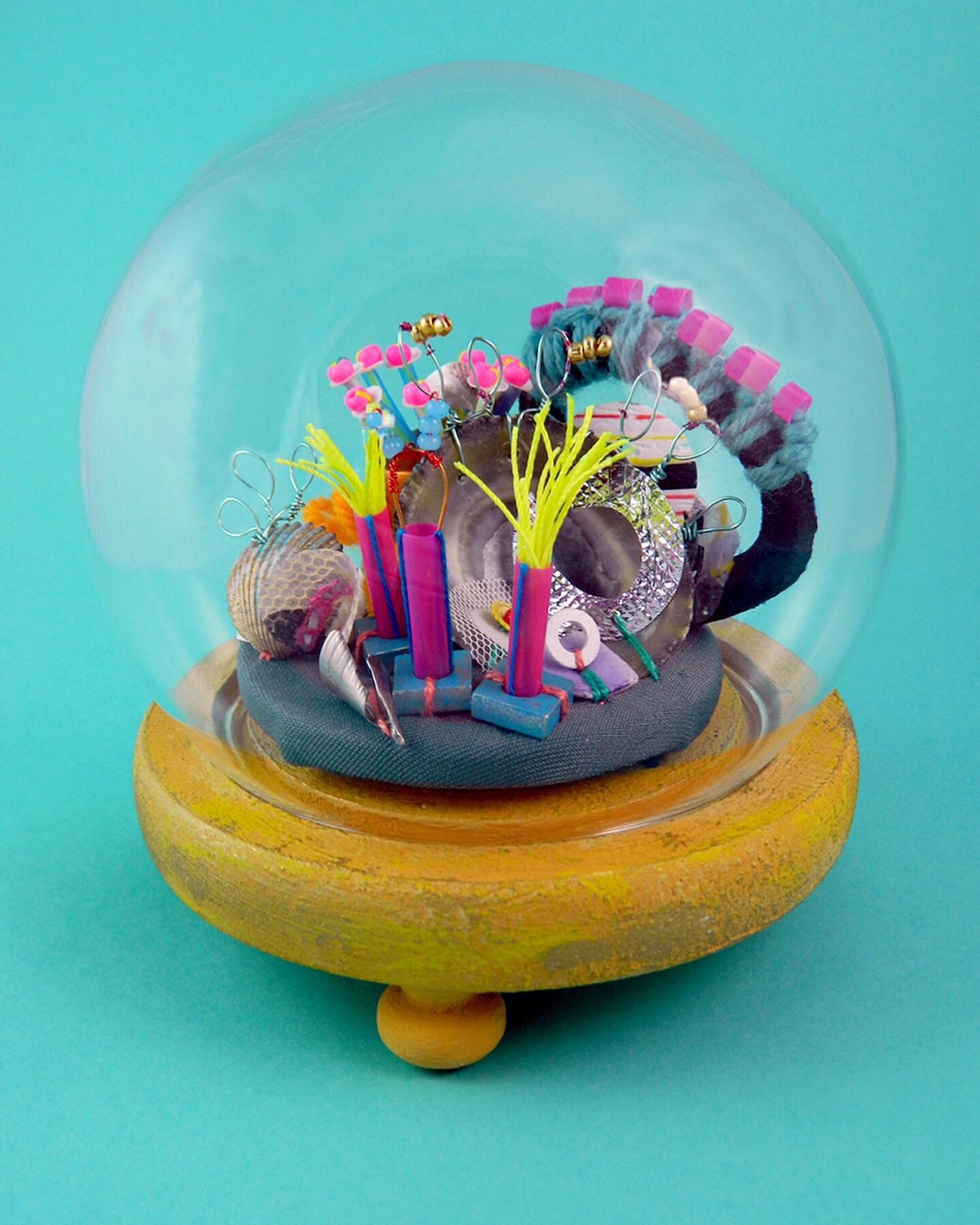
Collections transformed
What initially attracted you to textiles as a medium?
I was fascinated with textiles from a young age. My great aunt gave me pieces of fabric with printed flowers and showed me how to embroider with coloured threads. I attempted to finish them off with neat flowers, but my attraction was more to the colours and textures of the stitches.
I also vividly remember destroying my poor mum’s ironing board cover, after a first attempt at devoré printing (a burn technique largely used with velvet) as a teenager.
I love the tactility of textiles, and I enjoy the challenge of creating a highly-detailed, three dimensional surface using embroidery and embellishment.
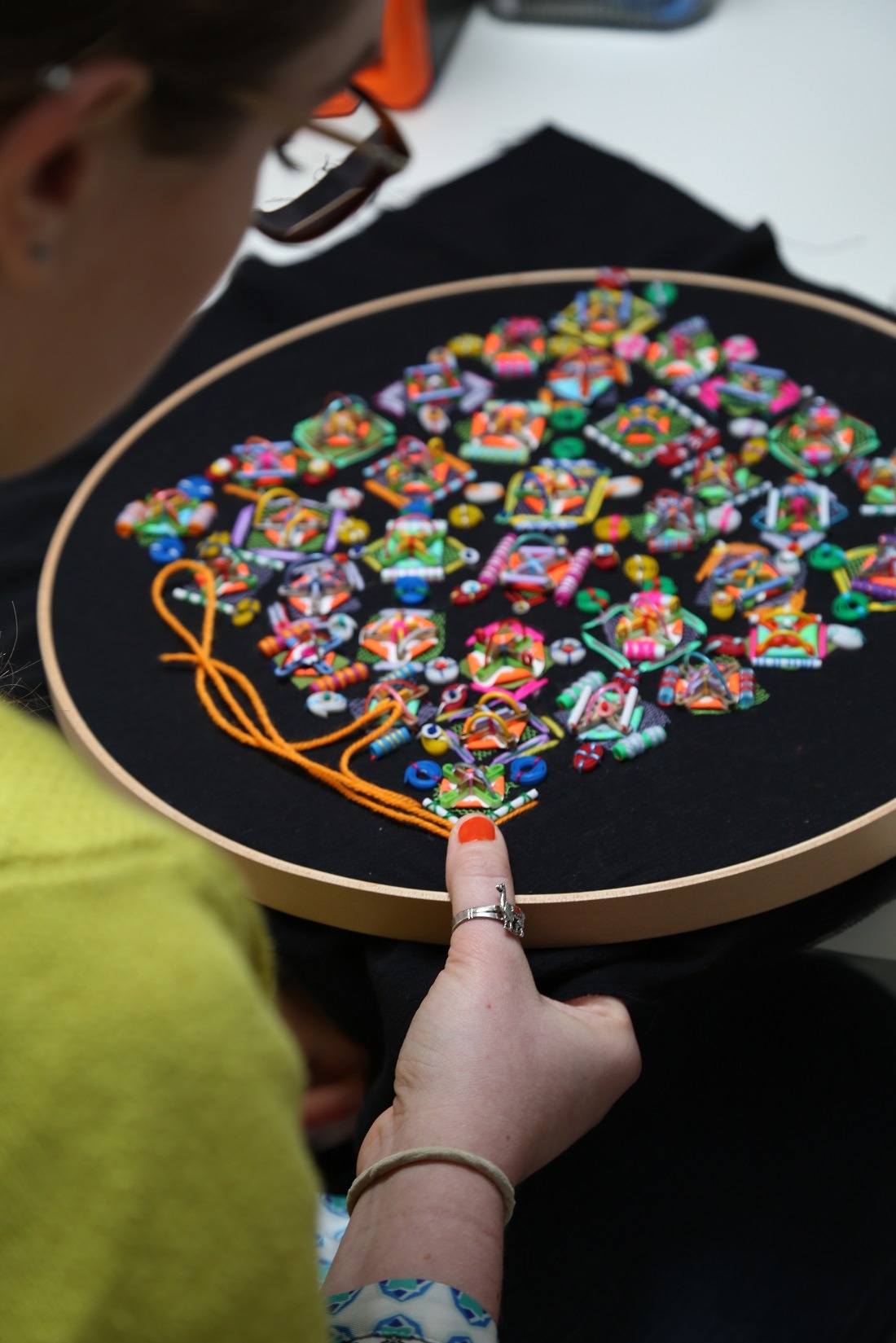
What were your early influences?
I grew up in a small town on the Yorkshire coast. I have always loved being near the sea and hunting for treasure, be it fragments of sea tumbled glass or broken shells and pottery.
I became a collector of ‘stuff’ at an early age, and it’s only now that I am going back to those collections and finding ways to incorporate those small pieces into my embroideries.
I was very shy and anxious as a child and threw all my energy into my studies and art projects. In a way, I feel it gave me a voice when I didn’t feel confident enough at the time to express myself through talking.
My family has always encouraged my art practice, and my mum was always coming along with me to look at new exhibitions or to shop for craft supplies.
Ironically, my college career advisor told me a textiles degree would give me limited career options, and therefore, wasn’t a good choice. Safe to say, I didn’t listen to her!
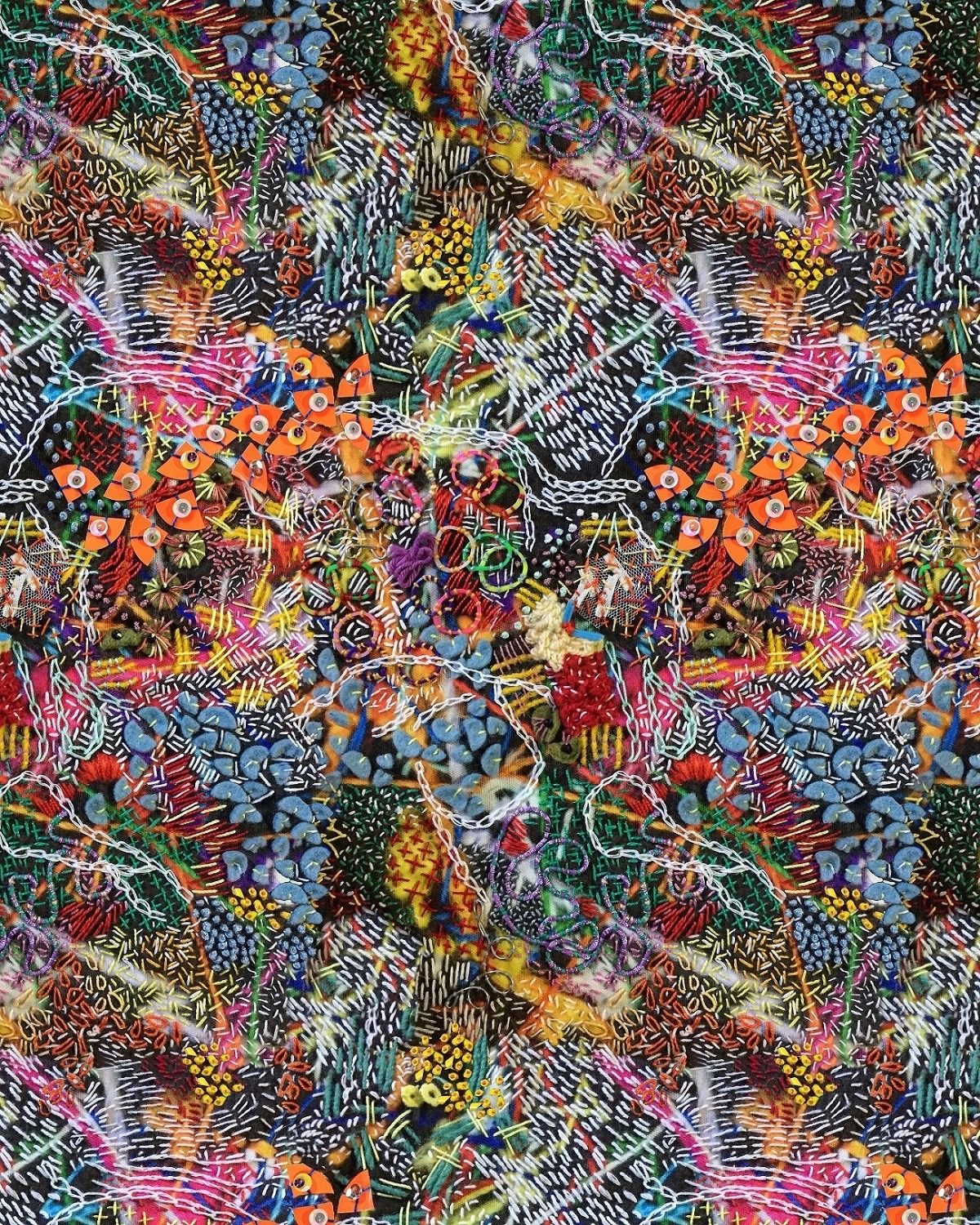
What was your route to becoming an artist?
I studied art and design at Norwich University of the Arts. After looking through my sketchbook, one of my teachers encouraged me to look at textiles as a degree option. Every page of my sketchbook had influences of texture, and I would try any new textile practice I could get my hands on.
So I completed a textile design degree, learning to weave, knit, print and stitch. My course had a flexible approach that allowed me to dabble with practices that interested me, rather than having to cement myself to one single discipline.
University helped hugely with my confidence and development of my artistic voice. I also interned at several commercial textile companies, including Hand and Lock, and Zandra Rhodes.
After graduation, I worked for several London companies as a freelance embroidery and print designer in the fashion industry. But I still created my own work and was always applying for exhibitions and shows alongside my commercial practice.
After a while, I found working in fashion began to dilute my sense of who I was as an artist, so I decided to do more of my own work. I applied for a new artist award in 2017 called ‘RAW Talent’ offered by an organisation called art&, and to my surprise, I got into the programme. It was an amazing experience in which I received both one-on-one and group mentoring. It made me realise that yes, I could do this. I just needed to be stubborn and not give up!
I am a big believer that you must keep plugging away and shout about your practice, including using social media or writing to magazines and shows.

What currently inspires you?
Colour, shape and pattern are my biggest inspirations. I also like a good challenge in taking something particularly bizarre and adding it into a textile context. If something has a hole in it, I will stitch it onto fabric. And if it doesn’t have a hole, I’ll drill one in!
My work is deliberately ambiguous in its theme. I enjoy hearing what people think the pieces look like, and for me, the main goal is to encourage curiosity and evoke a sense of playfulness and joy. I always say I create happy work only, with the colour really shouting out to you when you look at a piece of work.
I am also inspired by my recycling ideas and trying to give materials a new purpose by turning them into something beautiful.
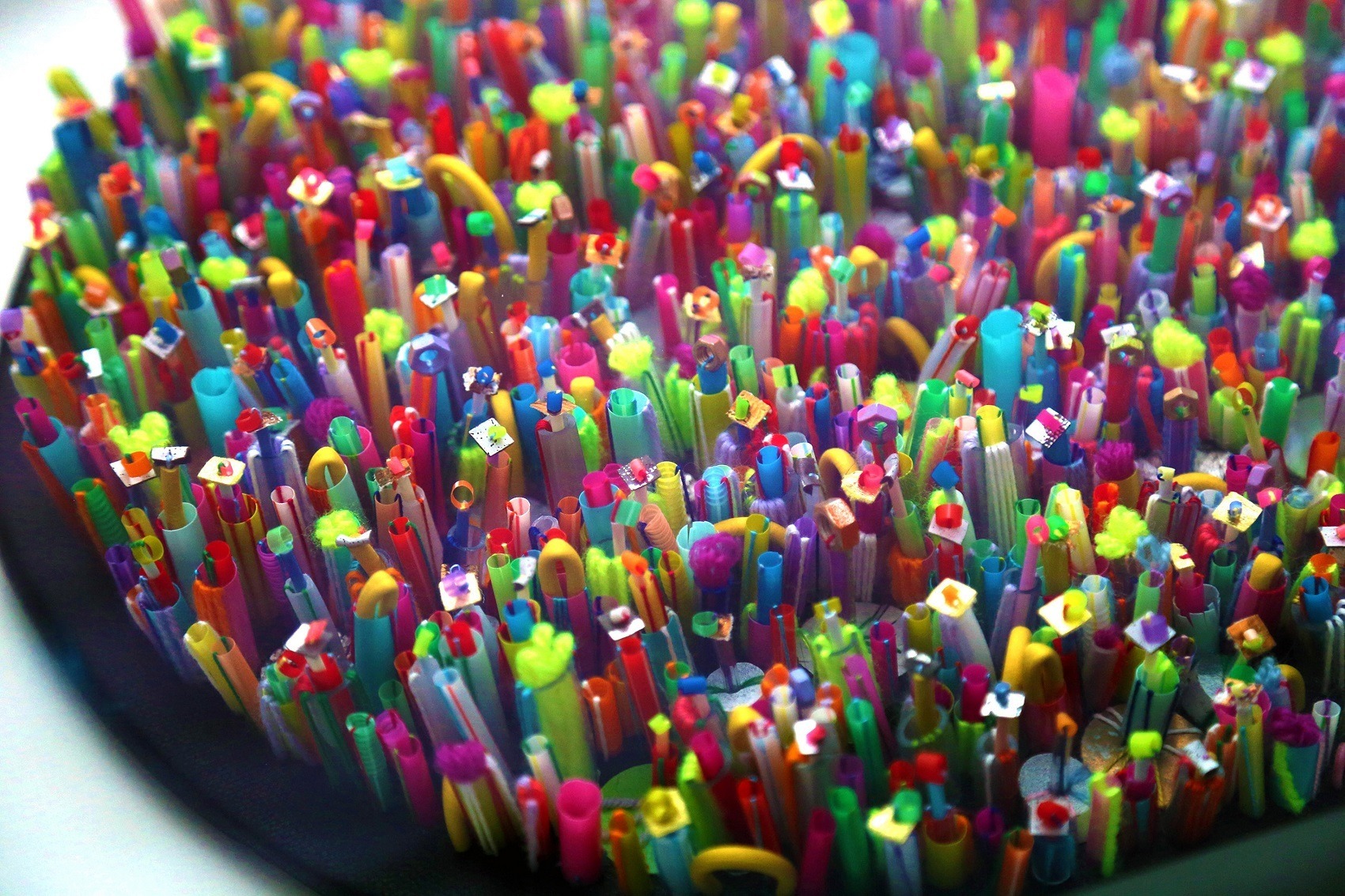
Zero-waste art
Tell us about an artwork that holds fond memories…
Fragments is a large-scale three dimensional framed artwork created entirely using recycled straws, wires and dyed medical tubing. This piece really pushed me out of my comfort zone and started my love of more sculptural embroidery work. It took several months to stitch.
At the time, I was at a pivot point in my artistic journey. I was making work because I wanted to sell the work and not because I wanted to make the work. I hadn’t yet realised that creating something I put my all into would be stronger than something made for commercial purposes.
I sent photographs of the piece to various magazines and shows, and it landed me a feature in several international textile magazines. And it is still a piece I enjoy taking to shows, including the International Quilt Festival in Tokyo, Japan (2020) and the Art Textiles Made in Britain exhibition (2021).
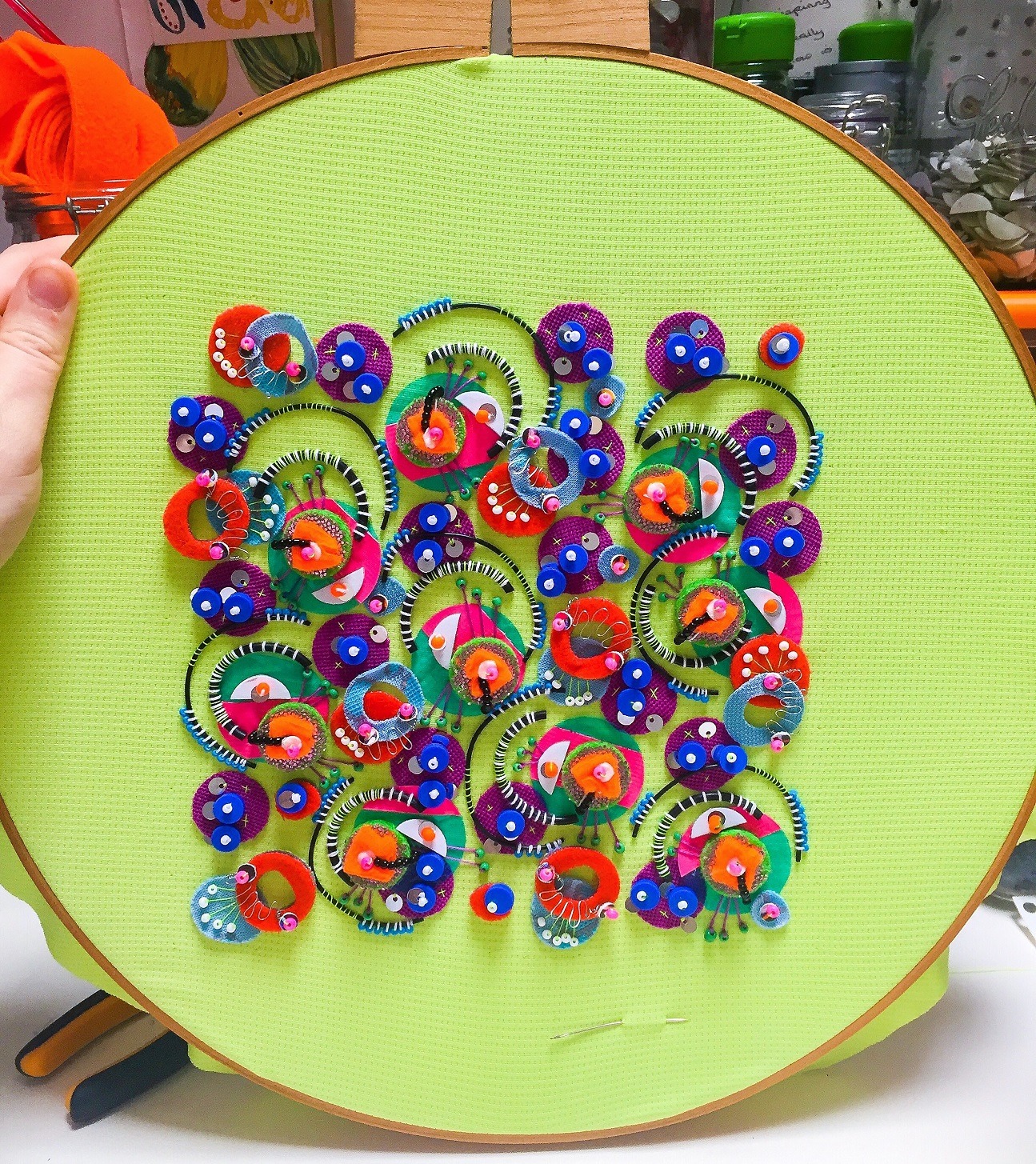
How has your work developed and evolved?
My work has evolved and grown up along with myself! I started my journey being quite hesitant and unsure. But my frustration at the lack of interesting sequins and beads led to me becoming more aware of zero waste practices. I now make a conscious effort to recycle and use up unloved materials in my embroidery work.
My sense of colour has also changed and grown stronger.
An exciting personal development has been the idea of creating highly sculptural 3-D embroidery pieces that break out of the format of framed artwork. I enjoy the challenge of stitching vertically, and that, combined with large-scale work, gives me lots of future installation ideas.
And in 2023, I achieved my goal of writing a book about my processes and ideas, when Stitched Mixed Media was published by Crowood Press.
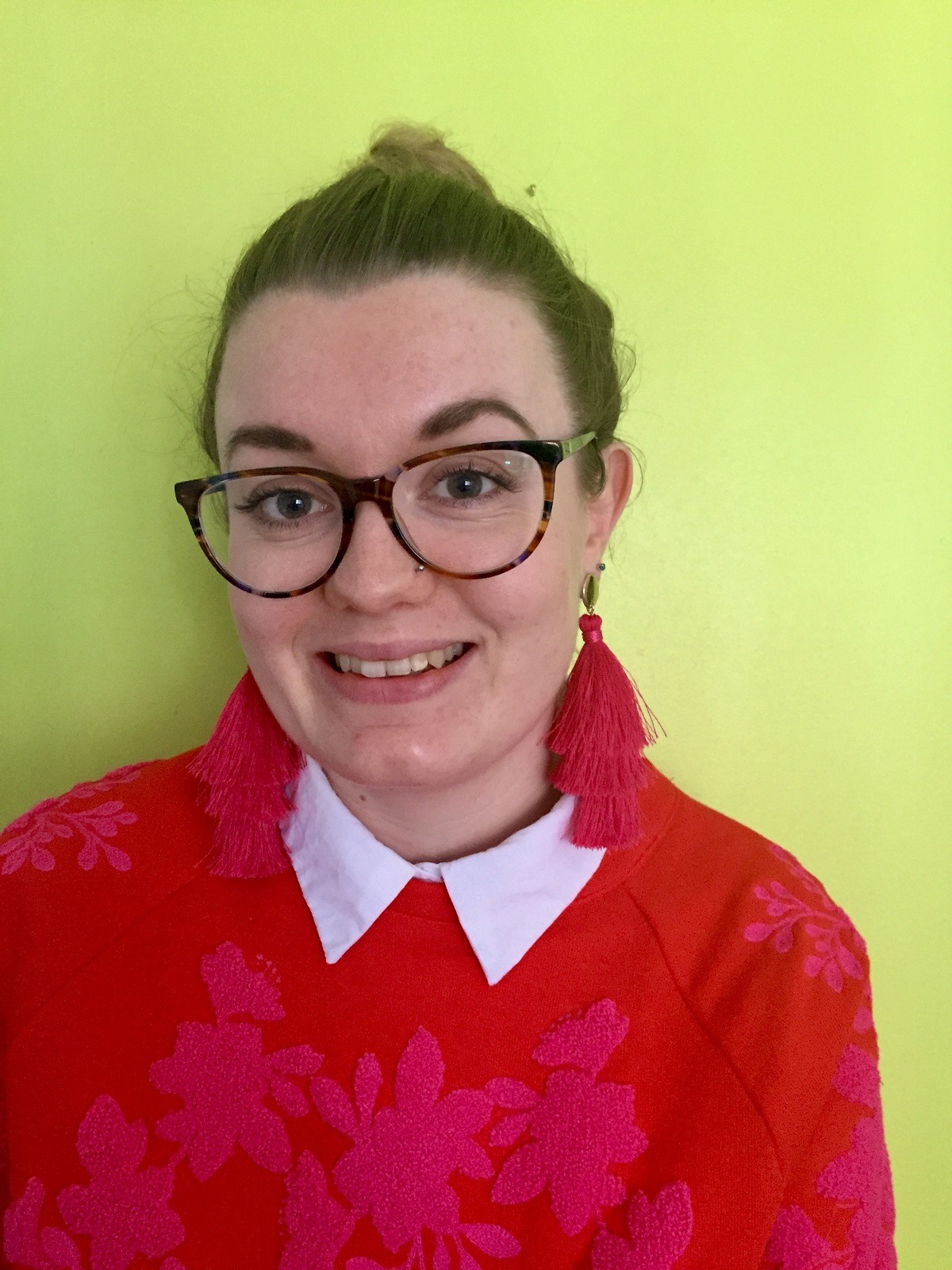
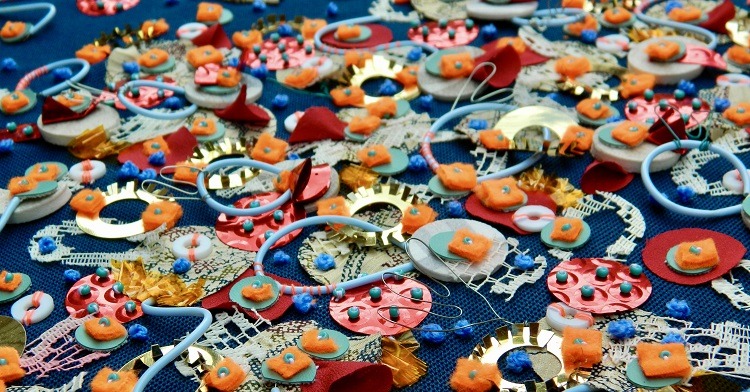
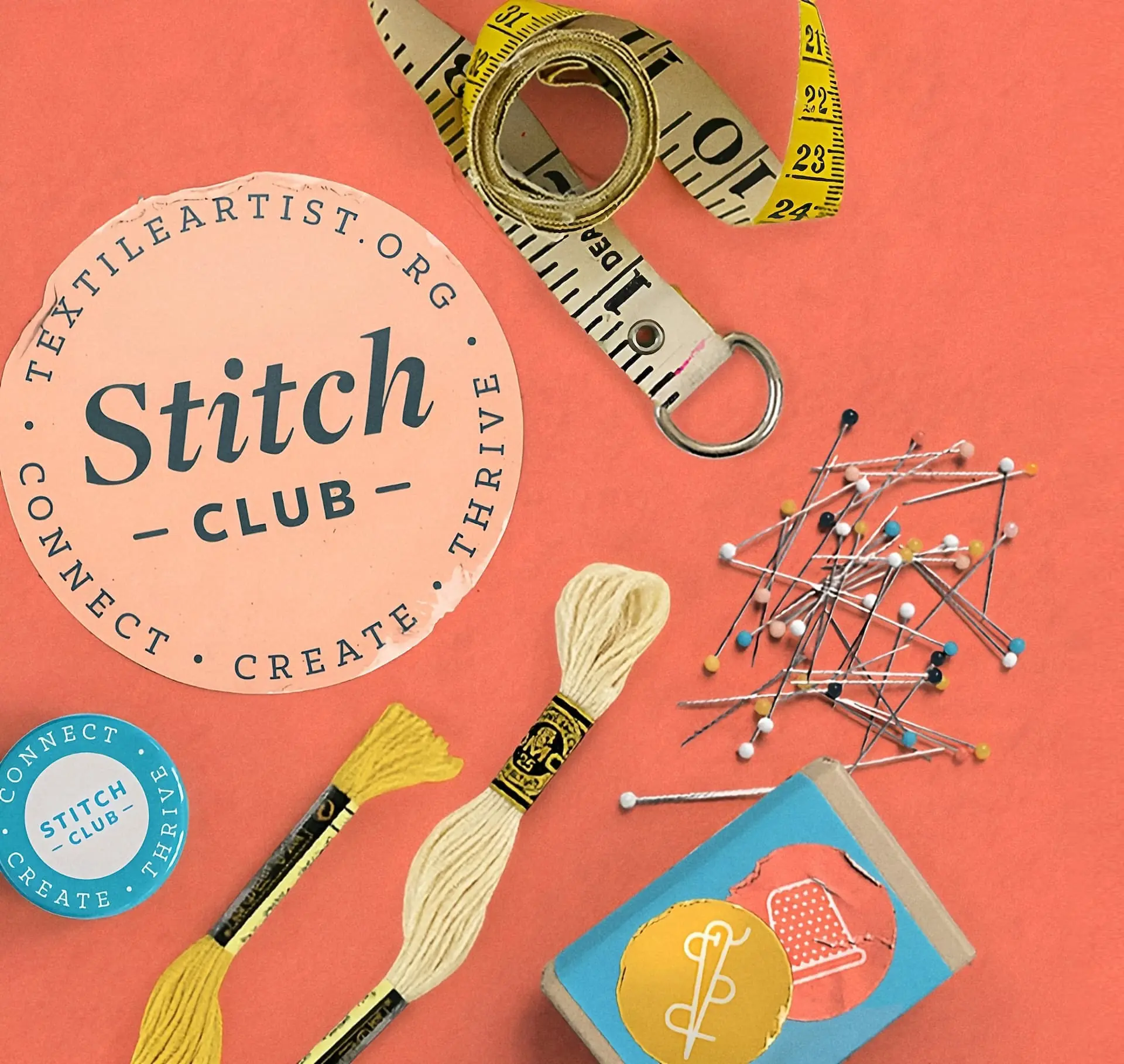
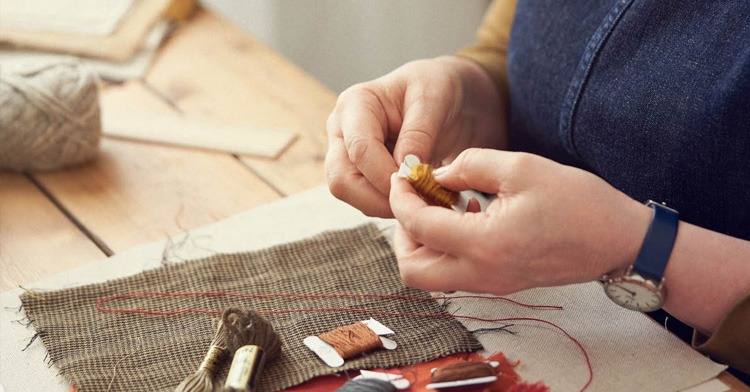
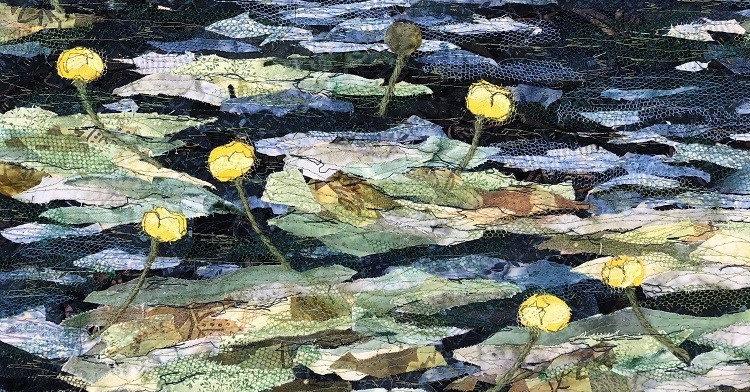
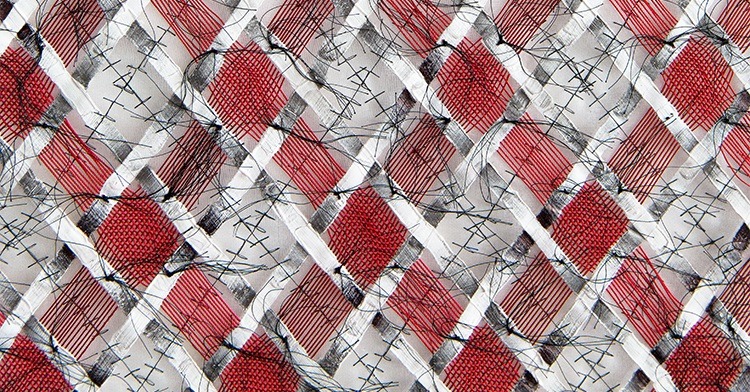
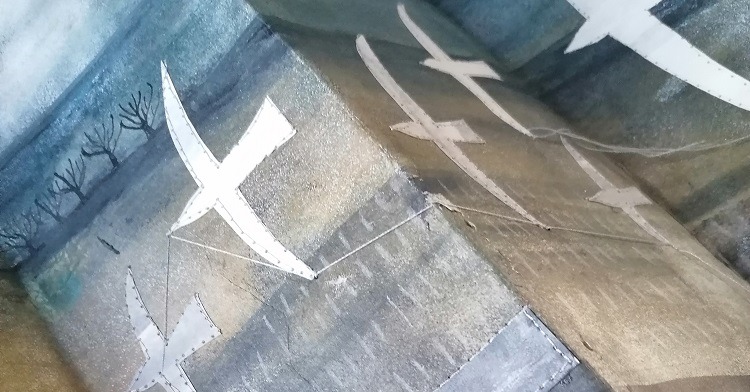
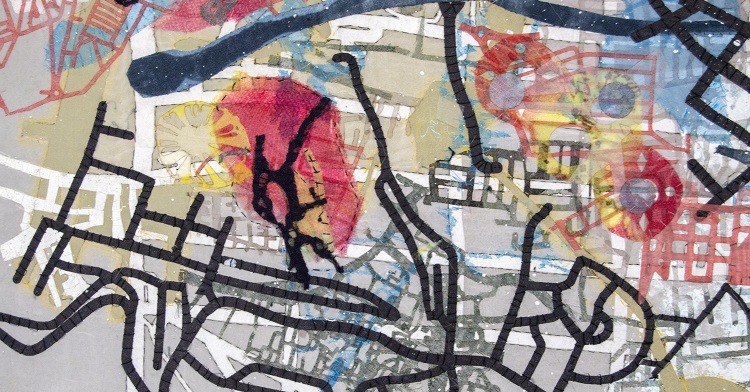



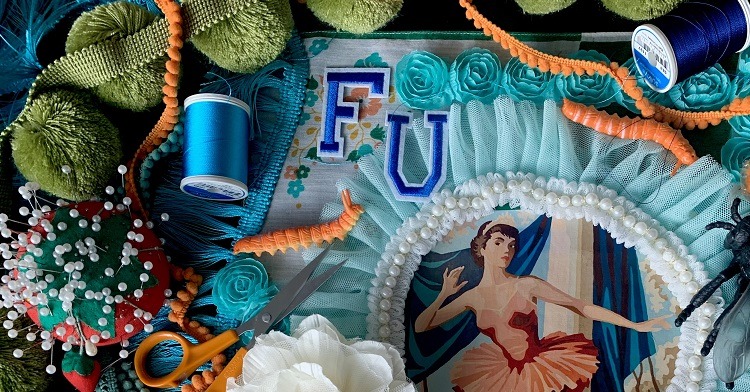
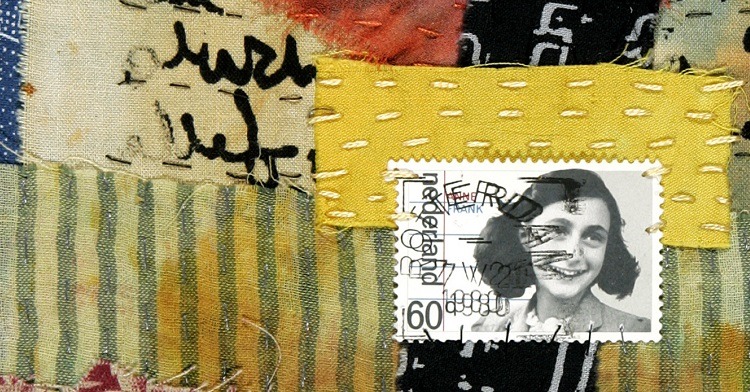
4 comments
Brenda small
I met a woman today thT took an amazing class that may have just ended Do you redo one’s that have been done already..it was stitching and tamping with household items.. so freaking cool..I’d love to see a tutorial.
Jessica Grady
Hi Brenda – thank you – I will be having a workshop on creating your own embellishments in Textile Artists Stitch Club from next week. Reusing household waste materials is such a great way to create your own unique sequins and beads!
Rebecca Dakan
I too have collected and saved! And love the sea. There is a salvage place at the end of my town. My guys went there so one day I went too. I really like Jessica’s ideas and work.
Jessica Grady
Thank you Rebecca – so much treasure can be found washed up on the shore line!